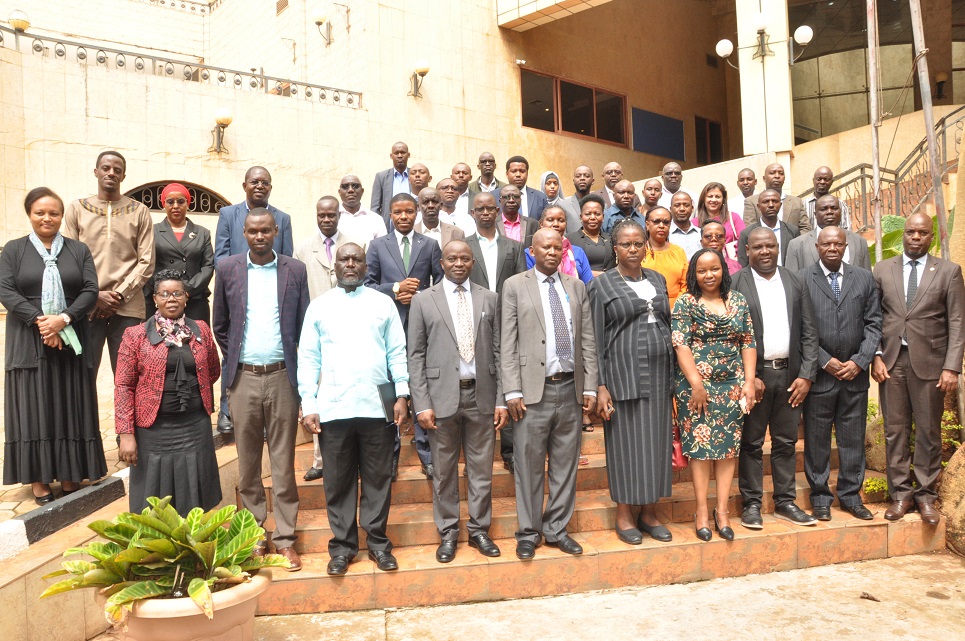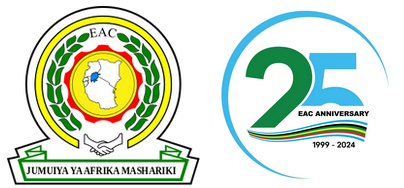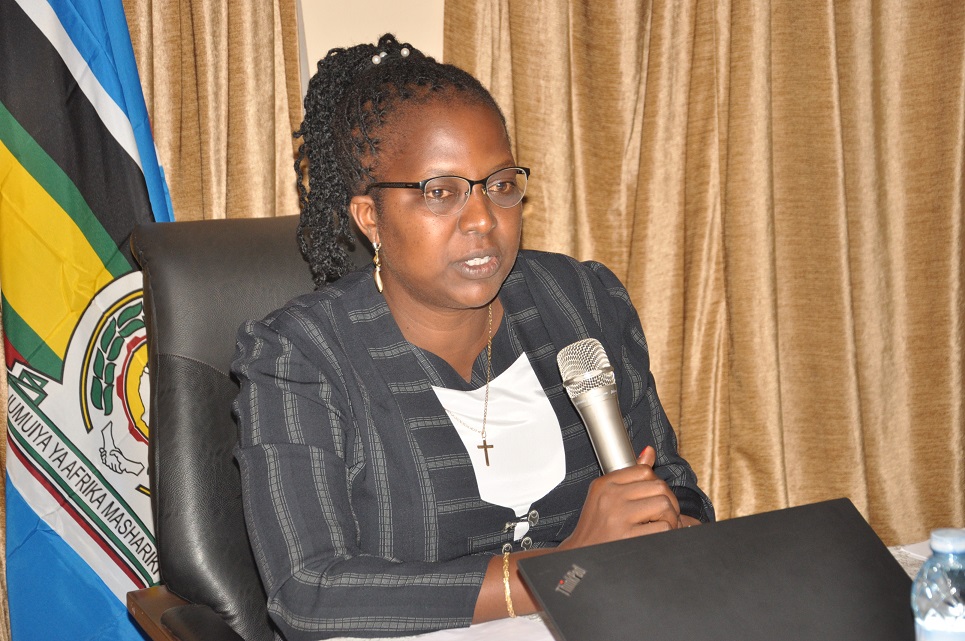
Limited knowledge and lack of access to appropriate technologies inhibiting aflatoxin prevention and control in East Africa
East African Community Headquarters, Arusha, Tanzania, 24th October, 2023: Limited knowledge and information on aflatoxin by stakeholders along the value chain has been identified as one of the major factors inhibiting aflatoxin prevention and control within the East African Community.
The inability by most farmers to easily access appropriate technologies for aflatoxin mitigation and inadequate private sector participation in aflatoxin management are also significant contributing factors to efforts to contain aflatoxin contamination in the region.
Also singled out as contributing to the aflatoxin menace is insufficient baseline data on aflatoxin to enable mapping of aflatoxin “hot spot” areas in all the Partner States and porous borders that ease the flow of contaminated grains across the region.
Low awareness among value chain actors, from the farm to consumers, on the social economic consequences of consuming or trading in aflatoxin contaminated foods and feeds is the other factor that aggravates the aflatoxin menace.
This emerged during a two-day regional workshop on the status of aflatoxin prevention and control in the EAC Partner States held in Kampala, Uganda. The overall objective of the USAID-Kenya/East Africa sponsored workshop is to assess the progress made so far by EAC Partner States on implementation of the regional strategy on aflatoxin prevention and control, identify existing bottlenecks and craft the way forward on aflatoxin containment in East Africa.
It is estimated that agricultural commodities account for about 65% of intra-regional trade in the EAC. It is further estimated that losses associated with Aflatoxin contamination in Africa have escalated to US$670 million annually. Aflatoxin also accounts for 30% of liver cancer cases in Africa.
“Lack of research results on the impact of the aflatoxin and other mycotoxins contamination in human health, lack of equipment and other related tools for mycotoxins detection and analysis and the low capacity of the Human Health staff to detect mycotoxins are some of the challenges that we have faced in Burundi with regard to management of aflatoxin,” said Dr. Marie-Chantal Niyuhire of the Institute of Agricultural Sciences of Burundi.
Despite the myriad challenges, some progress has been made in the region in preventing and controlling aflatoxin. Dr. Niyuhire disclosed that pre- and post-harvest mycotoxin management has been improved in Burundi, adding that the construction of an aflasafe production plant at the National Center for Food Technology (CNTA) has also been completed.
Dr. Niyuhire, who is also the Chairperson of the workshop, said that a great deal of awareness-raising on aflatoxins and the use of aflasafe carried out, targeting the Burundi Provincial Office of Environment, Agriculture and Livestock (BPEAE) authorities and units with flour production mills. Aflasafe is a beneficial plant bioprotectant and a non-chemical agricultural product developed against aflatoxins.
On progress made by Kenya in containing aflatoxin, Ms. Brenda Obura from the Ministry of Health revealed that 650 County Public Health officers (CoPHOs) trained on aflatoxin screening in cereals and pulses from 24 counties.
Ms. Obura further disclosed that mini laboratories had been established in 18 counties through the support of the World Food Programme to help CoPHOs carry out continuous surveillance in cereals and pulses.
“The construction and commissioning of a regional mycotoxin laboratory at the Kenya Agricultural and Livestock Research Organization (KALRO) at the KALRO-Katumani station to assist in constant monitoring and surveillance efforts of aflatoxin in the region is also a major milestone,” said Ms. Obura.
Ms. Obura said that other steps taken towards the containment of aflatoxin were: the promotion of warehouse receipt system by the National Cereals and Produce Board and use of binders to manufacturer animal feeds; establishment of a functional modular aflasafe manufacturing plant at KALRO; manufacture and distribution of 350 metric tonnes of aflasafe through public- private partnerships.
“The government is also sourcing 100 mobile driers in addition to the earlier procured 39. Through the Ministry of Investment Trade and Industry, a multi-agency committee on the management of aflatoxin contamination in food and feed has been put in place. Also ongoing is the installation of mobile/mini testing facilities at the border points managed by the Kenya Bureau of Standards,” said Ms.Obura.
“Also underway are the installation of 10 aflatoxin testing labs at NCPB, installation of the Ozone Treatment Plant at NCPB and continuous research work by the academia on aflatoxin,” she added.
Mr. Alex Bambona, the Assistant Commissioner, Food and Nutrition (MAAIF), Uganda reported that a poor food safety culture in the country coupled with some pockets of food insecurity and poverty has increased the costs of ensuring compliance to necessary food safety standards along the value chain
“The scattered food safety mandate among various Ministries, Departments and Agencies and inadequate food control or value chain management infrastructure (labs, post-harvest handling & others has also posed challenges in aflatoxin prevention,” said Mr. Bambona.
Mr. Bambona further disclosed that the Uganda National Bureau of Statistics (UNBS) Lab has been equipped and accredited to test for aflatoxin with the services decentralised to the regions even as he added that Makerere Labs at the Department of Food Technology and Nutrition has also been recognised by UNBS to test AF
“Also in process is the development of an Aflatoxin Biocontrol Agent that will soon be commercialized. The efficacy trials are completed, commercialisation strategy developed, investor's forum was held last week for the expression of interest in Aflasafe manufacturing and distribution,” he said.
Mr. Bambona said that public awareness and education campaigns at least twice a year to sensitise stakeholders along the value chain on aflatoxins management and postharvest handling, adding that rapid testing Aflatoxin Testing Kits to support the Grain Producer Groups had also been procured.
Speaking on behalf of the Republic of Rwanda, Mr. Muhirwa Shimwa Parfait Marcel, Food Import and Export Control Specialist, Rwanda Food and Drugs identified the lack of reliable, cost-effective methods for detecting aflatoxins in food products as one of the bottlenecks to aflatoxin prevention and control in the county.
“Continuous enforcement is also a challenge in that the regulations exist, but weak enforcement may make it difficult to comply. There is also limited access to drying technologies in that proper drying of crops is essential to prevent mold growth,” said Mr. Shimwa.
Mr. Shimwa said that lack of proper storage facilities to protect harvested crops from moisture and pest infestations was also a challenge.
For the United Republic of Tanzania, Dr. Mahamudu Mohamed Sasamalo, the Eastern Coast Regional Manager at the Tanzania Plant Health and Pesticides Authority (TPHPA), said that among the measures that had worked for the country were the: control field infection by fungi of planting crops i.e. Aflasafe (IITA); control of insect infestation in stored bulk grains with approved insecticides i.e. godown inspection by TPHPA inspectors; establishment of Mini labs at 14 border posts (TPHPA) and; the establishment of a Centre of excellence Lab (Kibaha) i.e. Food Safety and Bio-Control – the Tanzania Initiative for Preventing Aflatoxin Contamination (TANIPAC) Project.
“The TANIPAC project has benefitted and built the capacities of 10,853 farmers, including 3,926 females with two (20 warehouses being established in Zanzibar and 12 in Mainland Tanzania-TANIPAC project. Purdue Improved Bags (PICS) are also being distributed to farmers,” added Dr. Sasamalo.
Dr. Sasamalo said that Tanzania was also using fungicides and preservatives against fungal growth in addition to mounting training on aflatoxin prevention for farmers, processors, distributors, traders across 18 districts by the Tanzania Bureau of Standards.
Speaking on behalf of the East African Grain Council, Mr. Kimwaga Mhando, the Trade Policy, Research and Advocacy Manager, said that the aflatoxin results in suppression of intra-regional trade in grains.
“Uganda and Tanzania lose approximately US$16 million and US5.3 million respectively due to the reduced value of agricultural exports resulting from aflatoxin contamination,” said Mr. Mhando.
“There are high levels of grain rejection by off-takers in the region. Kenyan millers on average rejected 19% of maize deliveries to their factories in 2015. Rejections by millers are as high as 60% on some occasions,” he said.
“It is estimated that aflatoxin reduces the amount of food available for consumption (in terms of caloric value) by 18 percent, 15 percent and 11 percent in Kenya, Uganda and Tanzania, respectively thus creating a food security gap,” said Mhando.
To address the issue of aflatoxin contamination, there was need for self-industry regulation involving diverse measures including: promoting good agricultural practices; registration of value chain players; promotion of good manufacturing practices; certification of warehouses and warehouse operators; Awareness creation and capacity building of value chain players, including consumers, and; incentivising food safety compliance, among other measures.
On her part, Ms. Paloma Fernandes, the CEO of the Cereal Millers Association of Kenya (CMA), urged industry leaders to take leadership of the food safety agenda.
We don’t need to wait for Government, regulators or activists to tell us what to do. We must always do the right thing at all times,” said Ms. Fernandes.
Ms. Fernandes called for a holistic approach to the prevention and control of aflatoxins by focusing on the entire value chain rather than the end product only; reviewing farming practices including post-harvest handling of maize, monitoring and enforcing adequate quality along the maize value chain.
“There is also a need to regulate transport services, wholesalers, retailers and traders, manage supply chains to ensure good quality premix and test kits and enhance surveillance at borders.
Speaking at the workshop, Dr. Enock Warinda, the Executive Director of the Association for Strengthening Agricultural Research in Eastern and Central Africa (ASARECA), there seems to be minimal coordination of the myriad partners involved in aflatoxin control within its Member States and in the EAC, and called for closer cooperation for better results in aflatoxin prevention and control.
Dr. Warinda said that ASARECA intends to coordinate interventions on aflatoxin prevention and control via promotion and scaling of proven best management practices.
“These include disposal, prevention, mitigation, as well as identification of alternative approaches,” said Dr. Warinda.
For more information, please contact:
Simon Peter Owaka
Senior Public Relations OfficerCorporate Communications and Public Affairs DepartmentEAC SecretariatArusha, TanzaniaTel: +255 768 552087Email: This email address is being protected from spambots. You need JavaScript enabled to view it.
About the East African Community Secretariat:
The East African Community (EAC) is a regional intergovernmental organisation of seven Partner States, comprising the Republic of Burundi, the Democratic Republic of Congo, the Republic of Kenya, the Republic of Rwanda, the Republic of South Sudan, the Republic of Uganda and the United Republic of Tanzania, with its headquarters in Arusha, Tanzania.
The EAC Secretariat is ISO 9001: 2015 Certified


